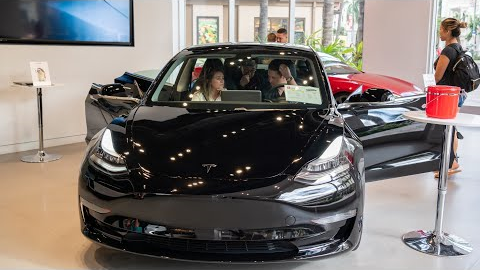Why Hawaii is becoming a leader in U.S. EV adoption
81 View
Share this Video
- Publish Date:
- April 15, 2024
- Category:
- Real Estate
- Video License
- Standard License
- Imported From:
- Youtube
Tags

U. S. consumers have been making the move to all-electric vehicles more slowly than many expected — but a growing leader in EV adoption is Hawaii. The tropical island state this year ranks fifth in overall EV adoption at 11.9% of new retail vehicles sold through February, according to J. D. Power. Hawaii also ranks third – behind only California (46.1) and Washington (37) – in J. D. Power's "EV Adoption Score," which is weighted based on market, consumer preference and EV availability, among other conditions, with a score of 33.8."We measure adoption relative to availability, meaning shoppers need availability of EVs that meet their needs … before they can even consider adopting," said Elizabeth Krear, vice president of the electric vehicle practice at J. D. Power. "In California, the quantity of EVs is much higher than in Hawaii. But when consumers are given a viable option, 33% are choosing to buy the EV."Hawaii also is the top state for EV adoption that hasn't agreed to the California Air Resources Board's Zero-Emission Vehicle program, according to J. D. Power. Those rules promote EVs and include stricter vehicle emissions and miles per gallon standards for traditional vehicles in places that have adopted the measure, including the other top five states: California, Washington, Oregon and Colorado. What's going on in Hawaii that's leading to more consumers opting for EVs? It's a mix of things but mainly high fuel costs, the availability of renewable energy for charging and culture, according to Ivan Drury, director of insights at auto research firm Edmunds, who lives in Waikiki on Hawaii's Oahu Island."There is a higher sense of responsibility towards stewarding the land versus most mainland states. If you look up 'Aina' in Hawaiian, you see what I mean, lots of pride for the land," he said. Drury also said the popularity of hybrid models in the state (at 19% in 2023) has helped in the switch to EVs, and road trip concerns – a hurdle for some buyers in the U. S. – aren't really a problem in Hawaii."We're on an island. No one is really worried about road trips unless they live on the Big Island," he said. (For reference, the "Hawaii Belt" around the Big Island, or Hawaii Island, is only about 260 miles.)Gasoline prices also play a factor, as they do in other states, such as California. The average price for a gallon of gas in Hawaii is about $4.72, according to AAA. That's the highest in the U. S. other than California and $1.10 higher than the national average of $3.62 a gallon. J. D. Power reports the top-selling EVs in the state are the Tesla Model Y, Tesla Model 3 and Ford F-150 Lightning."I'm really happy. I like the car. I like not buying gas," said Scott Sageman, a 2021 Tesla Model 3 owner who has lived on Hawaii's Big Island since moving from California in 2020.
All data is taken from the source: http://cnbc.com
Article Link: https://www.cnbc.com/2024/04/13/why-hawaii-is-becoming-a-leader-in-us-ev-adoption.html
#newsabc #newstodaylocal #bbcnewsworld #newsworldfox #newsworldwide #newstodayworld #














